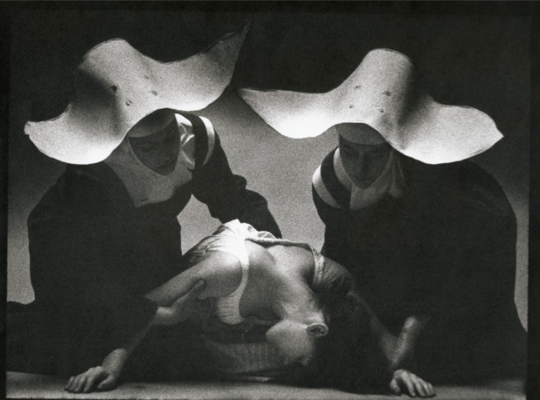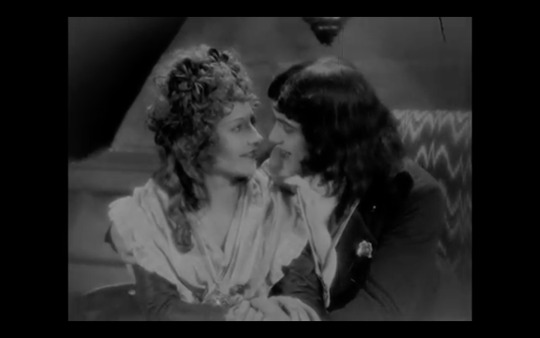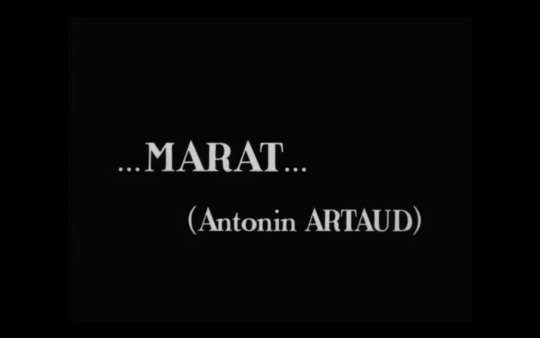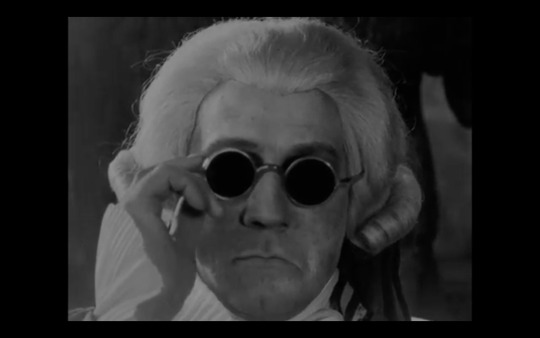#jean-Paul marat
Text

Martyr and friend of the people, sketch cross-referenced from various paintings (thanks, David...)
#My art#French Revolution#Frev#Marat#Jean-Paul Marat#Post-hoc dedicated to the fantastic translators and history aficionados who make his (and others') work accessible to the layman
102 notes
·
View notes
Text


Glenda Jackson as Charlotte Corday in The Persecution and Assassination of Jean-Paul Marat as Performed by the Inmates of the Asylum of Charenton Under the Direction of the Marquis De Sade, 1967, 1986
#art#theater#glenda jackson#charlotte corday#black and white#max waldman#1960s#1980s#nuns#plays#vintage#marat#jean-paul marat#marquis de sade#royal shakespeare company#marat/sade
137 notes
·
View notes
Text
do kids these days even know about la canción de marat. are they aware of la canción de marat. everyone would do well to remember la canción de marat.
youtube
#best frev thing ever created its caught in my head constantly#frev#marat#french revolution#jean-paul marat#Youtube
56 notes
·
View notes
Text

Friend requested I draw Marat and . i decided to add in a little FGO's Charlotte Corday too
42 notes
·
View notes
Text

Vizille+ghosts part one of idk how many I'll do. Two more for sure.
#Yes saint-just is holding his head to the hole#I realized halfway through that it was a bit confusing without seeing behind the thingie#anyways#Marat#Jean-Paul Marat#Robespierre#Maximilian Robespierre#don’t ask me how he got the phone or the ability to take pictures#Agustin Robespierre#Bonbon Robespierre#Louis Antoine Saint Just#Saint Just#not tagging le bas and couthon cause you can barely see them#I still don’t know why I made this
22 notes
·
View notes
Text
'The War of the Districts, or the Flight of Marat…'
Part 1 (of 5)
Some years ago I photographed a fantastic, satirical poem from a compendium of French Revolutionary verse in the BnF (réserve). It’s been gathering virtual dust ever since. But no more! It’s a witty take on a key moment from early in the Revolution, when the Paris authorities pitted themselves against the radical Cordeliers district (under Danton’s leadership). With help from @anotherhumaninthisworld (merci encore!), we managed to produce a rough translation, which I revised, added some footnotes (to clarify the more obscure references) and added this brief intro to put it in context. While the translation is a literal one, I’ve tried to preserve some of the rhyming spirit of the original where possible. So boil the kettle, get a brew on and settle down to an epic account of Maranton vs Neckerette…
In the early hours of 22 January 1790, General Lafayette, commander of the National Guard, authorized a large military force to arrest the radical journalist Jean-Paul Marat, following a request from Sylvain Bailly, the Mayor of Paris, to provide the Chatelet with sufficient armed force [“main-forte’] to enable its bailiff to enforce the warrant.[1] Bailly’s request was in response to the outrage caused by the publication, four days earlier, of Marat’s 78-page Denunciation of the finance minister, Jacques Necker.[2] Marat had moved into the district the Cordeliers district in December to seek its declared protection against arbitrary prosecution.
His best-selling pamphlet denounced Necker – probably the most popular man in France after the King in July 1789 – of covertly supporting the Ancien Régime and working to undermine the Revolution. His accusations included plotting to dissolve the National Assembly and remove the royal family to Metz on 5 October, colluding in grain hoarding and speculation, and generally compromising the King’s honour. The charges were intended to reveal a cumulative (and damning) pattern of behaviour since Necker’s reappointment in July 1788, and again in July 1789. Bearing his Rousseau-derived epigraph, Vitam impendere vero (‘To devote one’s life to the truth’) – now used as a kind of personal branding, Marat adopted the role of “avocat” to ‘try’ Necker before the court of public opinion.[3] Its general tone came in the context of a wider distrust of international capitalism, with which Necker was closely associated, and which appearted to violate many traditional values.[4] For those interested in the nitty gritty, here’s a footnote explaining why Marat had completely lost faith in Necker.[5]
It caused such a sensation that the first print-run sold out in 24 hours. Most of the radical press hailed Marat’s audacity in challenging Necker’s ‘virtuous’ reputation, while providing invaluable publicity for his pamphlet. The legal pursuit of Marat was largely prompted by the rigid adherence of the Chatelet to Ancien Régime values against the offence of libel (attacking a person in print).[6] I suspect that Marat was hoping a high-profile campaign against Necker would help to establish his name in the public eye by provoking a strong response. However, this was one of the rare occasions when Necker delegated his defence to ‘hired’ pens, providing Marat with valuable extra publicity.
If libel was the main reason for going after Marat, the impetus for pursuit was further motivated by wider political concerns over the extreme volatility that had gripped Paris since mid-December. After pre-emptive popular action in July and October against perceived counter-revolutionary plotting, a new wave of similar rumours was seen by many as a signal that the thermometer was about to explode again. The arrest of the marquis de Favras on Christmas Eve, for allegedly conspiring to raise a force to whisk the King away to safety, assassinate revolutionary leaders, and put his master, Monsieur (the King’s middle brother) on the throne as regent, only served to intensify popular fears. This, combined with the continuing failure to prosecute any royal officers, including the baron de Besenval, commander of the King’s troops around Paris during 12-14 July – who would be acquitted on 29 January for ‘counter-revolutionary’ actions – led to large crowds milling daily outside the Palais de Justice, as the legal action against both men dragged on through January.[7] On the 7th January, a bread riot in Versailles led to the declaration of martial law; on the 10th, a large march on the Hotel de Ville had been stopped in its tracks by Lafayette; on the 11th, there was an unruly 10,000-strong demonstration, screaming death-threats against defendants and judges, in the worst disturbances to public order since the October Days march on Versailles (and the most severe for another year); and on the 13th, tensions were further exacerbated by a threatened mutiny amongst disgruntled National Guards, which was efficiently snuffed out by Lafayette.[8] As a result, Marat’s Denunciation, and earlier attacks on Boucher d’Argis, the trial’s presiding judge, were seen as encouraging a dangerous distrust towards the authorities. Hence the pressing need to set an example of him.
So much for the background. Do we know anything about the poem’s authorship? it appeared around the same time (July/August) as Louis de Champcenetz & Antoine Rivarol’s sarcastic Petit dictionnaire des grands hommes de la Révolution, par un citoyen actif, ci-devant Rien(July/Aug 1790), which featured a brief entry on how Marat had eluded the attention of 5000 National Guardsmen and hid in southern France, disguised as a deserter. These figures would become the subject of wildly varying estimates, depending on who was reporting the ‘Affair’ – all, technically, primary sources! The higher the number of soldiers, the greater the degree of ridicule.[9] Contemporary accounts ranged from 400 to 12,000, although the latter exaggerated figure, included the extensive reserves positioned outside the district.[10] Since the poem also suggests around 5000 men, this similarity of numbers, alongside other literary and satirical clues, such as both men’s involvement in the Actes des apôtres, and the Petit dictionnaire’s targeting of Mme de Stael, suggest a possible common authorship.[11] While the poem took delight in mocking the ineptitude of the Paris Commune, the lattertook aim at the pretensions of the new class of revolutionary. While it is impossible to estimate the public reception of this poem, its cheap cover price of 15 sols suggests it was aimed at a wide audience. It was also republished under at least two different titles, sometimes alongside other counter-revolutionary pamphlets.[12]
Both act as important markers of Marat’s growing celebrity, just six months after the storming of the Bastille. A celebrity that reached far beyond the confines of his district (now section) and readership (which peaked at around 3000).[13] Marat was no longer being spoken of as just a malignant slanderer [“calomniateur”] but as the embodiment of a certain revolutionary stereotype. While he lacked the dedicated ‘fan base’ of a true celebrity, such as a Rousseau, a Voltaire or (even) a Necker, he did not lack for public curiosity, which was satisfied in his absence by a mediatized presence in pamphlets, poems, and the new lexicology.[14] For example, Marat would earn nine, separate entries in Pierre-Nicolas Chantreau’s Dictionnaire national et anecdotique (Aug 1790), the first in a series of dictionaries to capitalize on the Revolution’s fluid redefinition of language.
There seems little doubt that Marat’s Denunciation was intended to provoke the authorities into a strong reaction, and create “quelque sensation”, of which this mock-heroic poem forms one small part.[15] It would prove a pivotal moment in his revolutionary career, transforming him from the failed savant of 1789 to a vigorous symbol of press freedom and independence in 1790. Who knows what might have happened, if, as one royalist later remarked, the authorities had simply ignored this scribbling “dwarf”, whose only weapon was his pen.[16]
I'll post the 3 parts of the poem under #la fuite de Marat. enjoy!
[1] The Chatelet represented legal authority within Paris.
[2] Dénonciation faite au tribunal public par M. Marat, l’Ami du Peuple, contre M. Necker, premier ministre des finances (18 Jan 1790).
[3] The slogan was borrowed from Rousseau’s Lettre à d’Alembert, itself a misquote from Juvenal’s Satires (Vitam inpendere vero = ‘To sacrifice one’s life for the truth’).
[4] See Steven Kaplan’s excellent analysis of the mechanisms of famine plots and popular beliefs in the collusion between state and grain merchants. In part, this reflected a lack of transparency and poor PR in the state’s dealings with the public. During 1789-1790, when anxieties over grain supply were the main cause of rumours and popular tension, Necker made little effort to explain government policies. The Famine Plot Persuasion in Eighteenth-Century France (1982).
[5] As a rule, the King, and his ministers, did not consider the workings of government to be anyone’s business, and was not accountable to the public. However, in 1781, Necker undermined this precedent by publishing his Compte-rendu – a transparent snapshot of the royal finances – yet on his return in 1788, he failed to promote equivalent transparency over grain provision. In consequence, local administrators suffered from a lack of reliable information. Given the underlying food insecurity that followed the poor harvest of 1788, any rumours only unsettled the public. The most dramatic example of this came in the summer of 1789, when rumours of large-scale movements of brigands & beggars created the violent, rural panic known as ‘The Great Fear’. It was Necker’s continuing silence on these matters that lost Marat’s trust.
[6] Necker had a history of published interventions defending himself before the tribunal of public opinion, confessing that a thirst for gloire (renown) had motivated his continual courting of PO, then dismissing it as a fickle creature after it turned against him in 1790. eg Sur l’Administration de M. Necker (1791). For the best demonstration of continuity with Ancien Régime values after 1789, see Charles Walton, Policing Public Opinion in the French Revolution (2009).
[7] The erosion of Necker’s popularity began on 30 July after he asked the Commune to grant amnesty to all political prisoners, including Besenval.
[8] While the evidence was slight, Favras’ sentence to be hanged on 18 February made him a convenient scapegoat, allowing Besenval and Monsieur to escape further action. See Barry M. Shapiro, Revolutionary Justice in Paris, 1789-1790 (1993).
[9] The most likely figure appears 300-500. See Eugène Babut, ‘Une journée au district des Cordeliers etc’, in Revue historique (1903), p.287 (fn); Olivier Coquard, Marat (1996), pp.251-55; and Jacques de Cock & Charlotte Goetz, eds., Oeuvres Politiques de Marat (1995), i:130*-197*.
[10] For example, figures cited, included 400 in the Révolutions de Paris (16-23 Jan); 600 (with canon) in Mercure de France (30 Jan), repeated in a letter by Thomas Lindet (22 Jan); 2000 in a fake Ami du peuple (28 March); 3000 in Grande motion etc. (March); 4000 in Révolutions de France; 6000 (with canon) in Montjoie’s Histoire de la conjuration etc. (1796), pp.157-58; 10,000 in Parisian clair-voyant; 12,000 in Marat’s Appel à la Nation (Feb), repeated in AdP (23 July), reduced to 4000 in AdP (9 Feb 1791), but restored to 12,000 inPubliciste de la République française (24 April 1793).
[11] “Five to six large battalions/Followed by two squadrons” = approximately 5000 men (4800 + 300). A royalist journal edited and published by Jean-Gabriel Peltier, who also appears the most likely publisher of this poem.
[12] For example, Crimes envers le Roi, et envers la nation. Ou Confession patriotique (n.d., n.p,) & Le Triumvirat, ou messieurs Necker, Bailly et Lafayette, poème comique en trois chants (n.d., n.p.). Note the unusual use of ‘triumvirate’ at a time when this generally applied to the trio of Antoine Barnave, Alexandre Lameth and Adrien Duport.
[13] By the time the poem appeared, the Cordeliers district had been renamed section Théåtre-français, following the administrative redivision of Paris from 60 districts to 48 sections on 21 May 1790.
[14] For the growth of mediatized celebrity, see Antoine Lilti, Figures publiques (2014).
[15] As Marat explained in a footnote (‘Profession de foi’) at the end of his Denunciation, “Comme ma plume a fait quelque sensation, les ennemis publics qui sont les miens ont répandu dans le monde qu’elle était vendue…”
[16] Felix Galart de Montjoie, Histoire de la conjuration de Louis-Philippe-Joseph d’Orléans (1796), pp.157-58.
#la fuite de Marat#french revolution#poetry#counter-revolutionary#Jean-Paul Marat#Antoine de Rivarol#Louis de Champcenetz#1790#libel#Jacques Necker#General Lafayette#marat
23 notes
·
View notes
Text

Does Keir Cromwell know how Jean-Paul Marat, leader of the Reign of Terror during the French Revolution, ended?
(Hint: he was stabbed to death. That's a knife crime!)
(Death of Marat, Jacques-Louis David, Museum of Fine Arts Brussels)
#keir starmer#keir jong un#keir stalin#starmer#starmergeddon#labour#starmer out now#starmer must go#art#art history#history#oliver cromwell#cromwell#civil war#french revolution#jacques-louis david#painter#painters#artist#artsists#marat#jean-paul marat#knife crime
11 notes
·
View notes
Photo

three little Jacobins
#according to Hugo#Maximilien Robespierre#jean-paul marat#georges danton#french revolution#frev#art#my art
229 notes
·
View notes
Photo






Napoléon (1927) réalisé par Abel Gance
#Napoléon#Napoléon vu par Abel Gance#Robert Vidalin#camille desmoulins#Francine Mussey#lucile desmoulins#Antonin Artaud#jean-paul marat#Edmond Van Daële#maximilien robespierre#Abel Gance#all characters should be introduced like this still today
234 notes
·
View notes
Text
Marat's song and death scene from the musical La Révolution Française l'Opéra Rock. Featuring Simonne and Charlotte Corday.
10 notes
·
View notes
Text

Old Marat art I did before I managed to nail down the way I draw him. Funky French Man just vibing
14 notes
·
View notes
Text

Charlotte Corday (1793) by Jean-Jacques Hauer
She requested this painting a few hours before her execution.
#Charlotte Corday#1793#1790s#Jean-Jacques Hauer#Marat#Jean-Paul Marat#French Revolution#painting#art#Miss Cromwell#Marie-Anne Charlotte de Corday d'Armont
9 notes
·
View notes
Note
Hi! I am relatively new to Frev and I don't know much. All I know is the Oversimplified video but I know the Frev and its historical figures are more complex than that. Were Robespierre and Marat that evil/bad irl as they were portrayed in the videos? I'm not sure where to find sources that state that they aren't bad people but state that they are more complex. (My English isn't very good)
No, Oversimplified is perhaps not the channel you should go to if what you’re looking for is nuanced depictions of historical figures… I wouldn’t go so far as to say the portrayal of Robespierre and Marat is grounded in nothing but lies, falsehood and propaganda, but rather the fact that the video oversimplifies (duh!), focuses on comedy as much as history and tries to tell the story of a ten years long, very complex revolution in just forty minutes.
What’s positive is that it isn’t very hard to find depictions of Marat and Robespierre more nuanced than those presented in the video (even biographers hostile towards the two would be more balanced, since they at least have more time to tell their story). You can find free biographies on Robespierre here, and free biographies on Marat here. Then you can of course also read their own texts and thoughts (Robespierre, Marat) though if you’re new to this, I think it still might be best to start with a biography.
#robespierre#marat#maximilien robespierre#jean-paul marat#ask#oversimplified#also your english is fine don’t worry about it
19 notes
·
View notes
Text

#patrick magee#Marat/Sade#peter weiss#marquis de sade#Jean-Paul Marat#antonin artaud#french revolution
7 notes
·
View notes
Text
My favourite Sewer People<3:

#This is so niche I doubt anyone will like this but look. Look. I love them both so much#also we don’t know where Pelican Town is#we don’t know how long Shadow People live#we don’t know how old Krobus is#so technically#in the Stardew valley universe#this could’ve happened#anyways#Jean-Paul Marat#Marat#Krobus#ddv Krobus
19 notes
·
View notes
